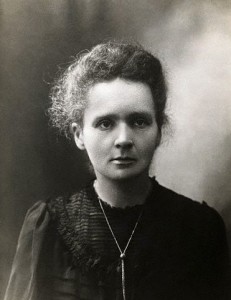![Julius Mendes Price [Public domain], via Wikimedia Commons from Wikimedia Commons](https://stewross.com/wp-content/uploads/2014/12/Pierre_and_Marie_Curie_Vanity_Fair_1904-12-22-150x150.jpg)
Family Affair
The Curie family was quite well known for their work in radiology and radium. Their daughter, Irene (1897–1956), would go on to win the 1935 Nobel Prize in chemistry. The other children were esteemed scientists in their own ways.
Pierre was an instructor at the School of Physics and Chemistry and would go on to hold the physics chair at the University of Paris created specifically for him. Despite this position, the Curies had to use a make shift laboratory located in a converted shed.
Jointly, the Curies are responsible for discovering two elements: polonium (named for her homeland of Poland) and radium. In time, they would create the word radioactivity. One of their 32 scientific papers dealt with radium and how when exposed to it, diseased and tumor-forming cells would die off quicker than healthy cells. Read More The Tragic Death of Madame Curie


